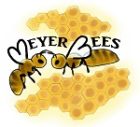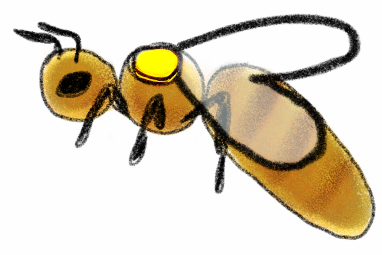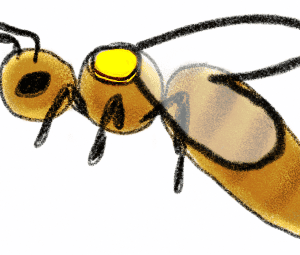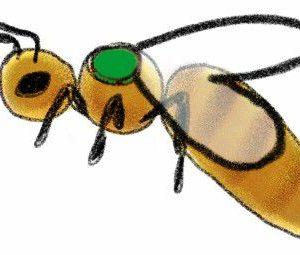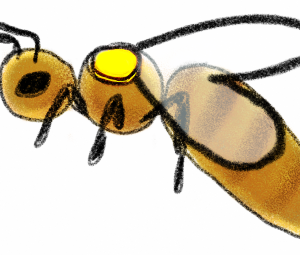Russian queen bee: mated and marked laying queen in 3-hole cage with queen candy and attendants.
Russian honey bees have an innate resistance to various parasitic mites. This race occurs in the original native range of the varroa mite, and selective pressure could have favored bees that exhibited aggressive behavior against colony-level mite infestations. Accordingly, experimental research has found that mite populations decline in colonies of pure Russian and of hybrid Russian-Italian bees. The mechanisms through which mite populations are controlled in these colonies include hygienic behavior towards mites, and possibly increased aggression towards mites. Russian stocks also have been shown to resist infection by tracheal mites.
See the Russian Honey Bee Breeders Association for additional information http://www.russianbreeder.org/
A short summary from the RHBBA site
A complimentary combination of various resistance mechanisms and behavioral strategies give Russian honey bees their strong resistance to varroa mites and their great resilience and wintering ability. Listed below are brief descriptions of some of these mechanisms and behaviors and how they compliment each other.
- When dead mites are collected from Russian colonies and other domestic stock, those collected from Russian colonies exhibit a higher proportion of missing/damaged appendages and damaged exoskeletons. Observations have been recorded of Russian bees ‘biting’ varroa mites, inflicting this damage. Let’s refer to this as Varroa Sensitive Grooming, or VSG.
- Relative to the general domestic population, Russian honey bees exhibit a high level of Varroa Sensitive Hygiene (VSH); they can detect that brood cells contain reproducing female varroa mites, they uncap a high percentage of those cells and eliminate most of the mites thus exposed.
- Relative to other domestic stock, in Russian honey bee colonies a much higher proportion of varroa mites are found on adult bees rather than reproducing in the colonies brood. This slows Mite Population Growth (MPG). Simultaneously, this increases the efficacy of Russian honey bees VSG trait as a higher proportion of the colonies mites are exposed to that behavior.
- Though the Russian Honey Bee Breeders Association does not select for hygienic behavior, Russian honey bees exhibit a high level of hygienic behavior. When compared with other stocks in multiple tests (removal of freeze killed brood) over time, these bees have exhibited excellent hygienic response.
- Relative to other domestic stock Russian honey bees are frugal, when appropriate, in brood rearing. They are very resource driven regarding brood production. Accordingly, in the beginning of the season they rear minimum brood until significant pollen and nectar are available to them. Brood rearing is again minimized or ceases altogether when annual pollen and nectar flows end or during periods of dearth. This shortens the total time of brood rearing. Shorter total brood rearing time translates into less MPG as well as an increased period that the mites decline due to VSG.
Russian Frugality
Russian honey bees frugality also serves to preserve the colonies stores. Russian honey bees balance this frugality in brood rearing with extremely rapid population expansion in order to take maximum advantage of good honey flows.
Keepers of Russian queen bees have noted that during dearth’s and during the ‘off season’ they are the quietest bees we have ever worked with. We presume that this is a part of the reason that they winter so well; it seems to serve both by preserving stores as well as by preserving the individual bees resilience/longevity.
